Blue Origin's New Shepard spacecraft just took another step toward flying passengers to the final frontier.
The reusable rocket-capsule combo aced its 11th test mission today (May 2), an uncrewed jaunt that toted 38 science experiments, a new record for the spacecraft, to suborbital space and back.
"A beautiful, beautiful launch of the booster and capsule today. Incredible," said Blue Origin's Ariane Cornell, director of astronaut and orbital sales, during live commentary. "This has been quite the morning."
New Shepard rose off a pad at Blue Origin's West Texas test site at 9:32 a.m. EDT (1332 GMT; 8:32 a.m. local time) and reached a maximum altitude of 66 miles (106 kilometers). About 10 minutes later, it was all over: the rocket made a vertical touchdown on its designated landing pad, and the capsule settled softly onto the West Texas plains under parachutes, raising a plume of dust as it hit the ground.
Related: Launch Photos! Blue Origin's New Shepard Soars for NASA on NS-10
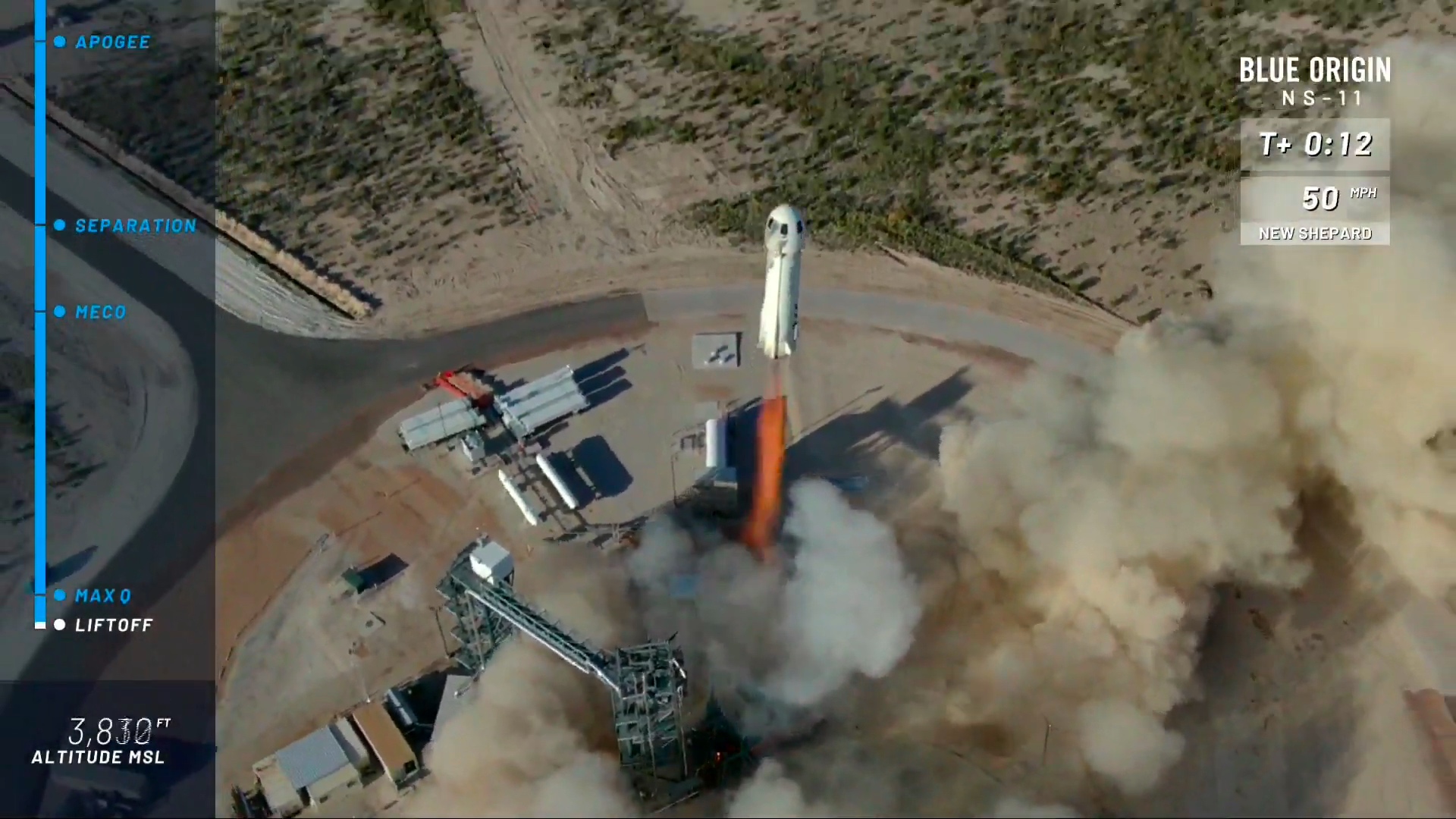
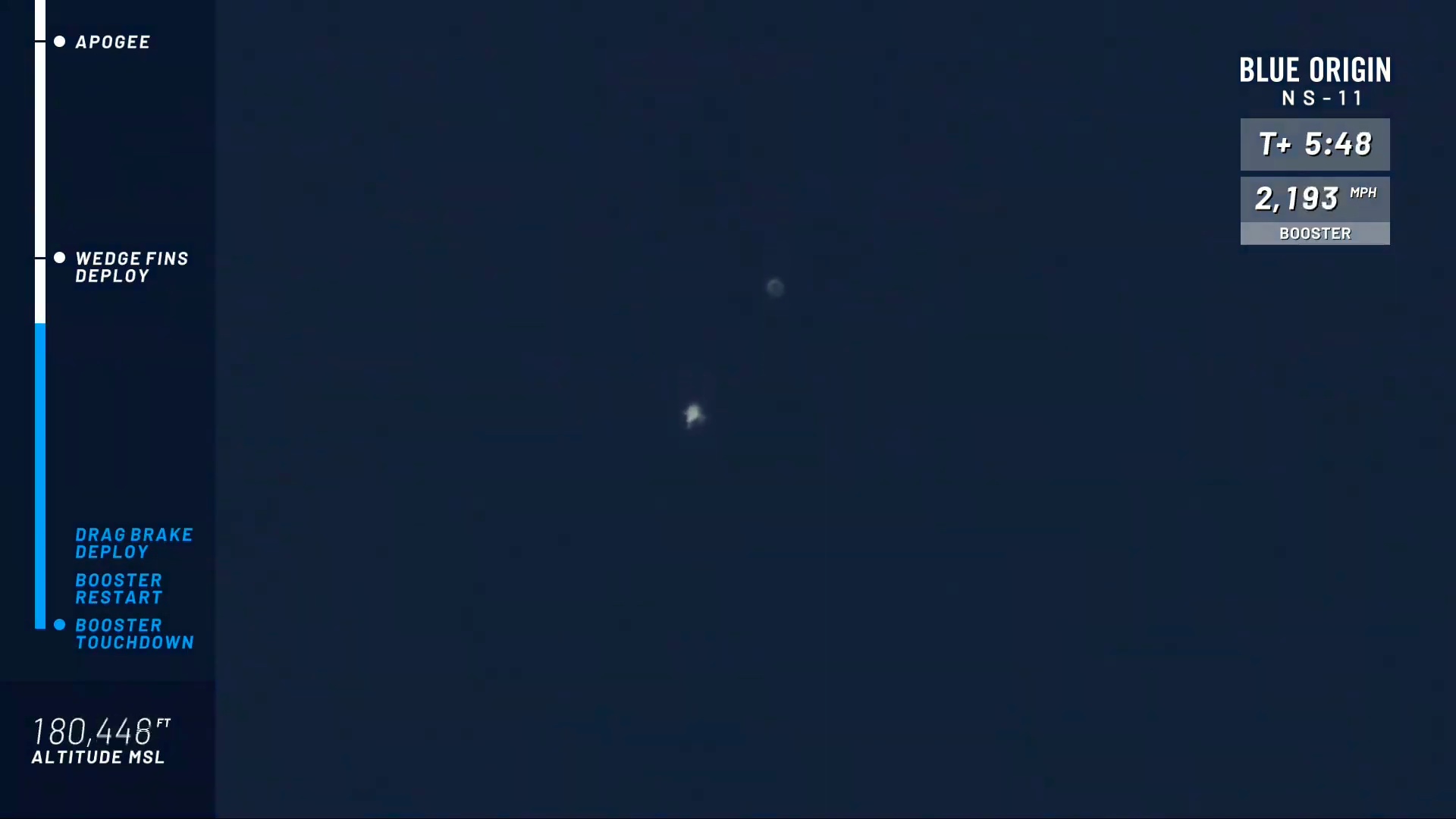
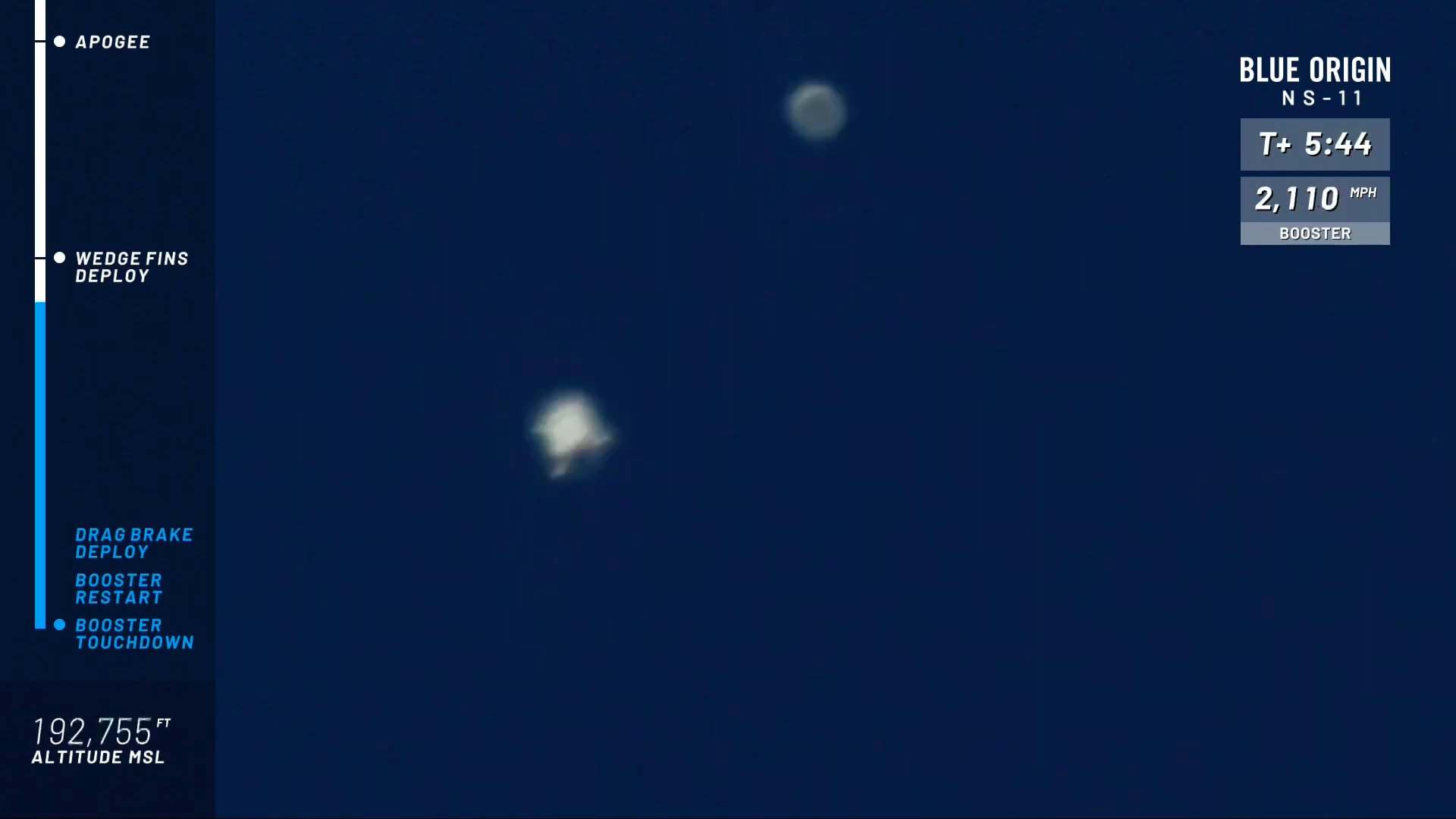
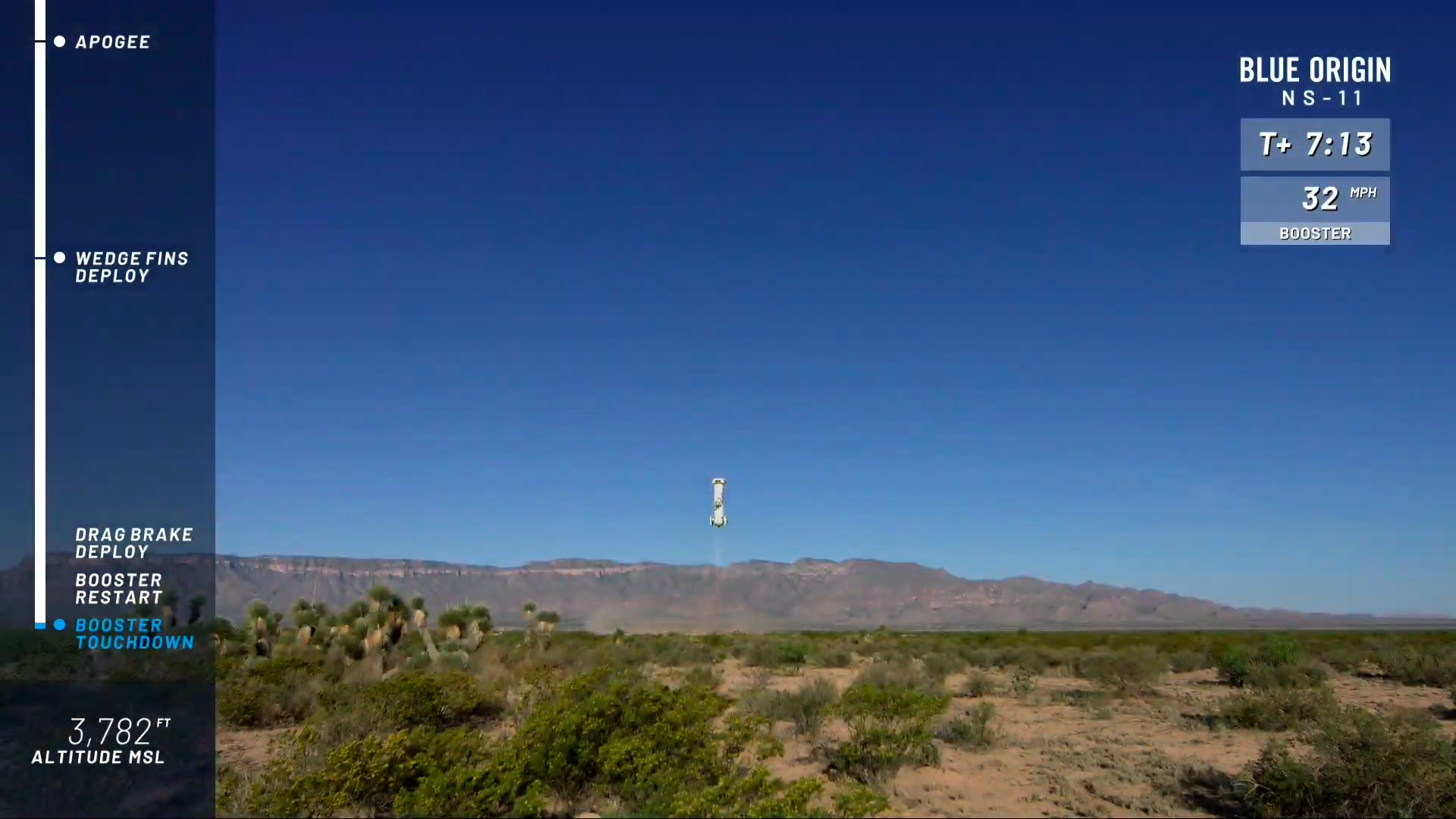
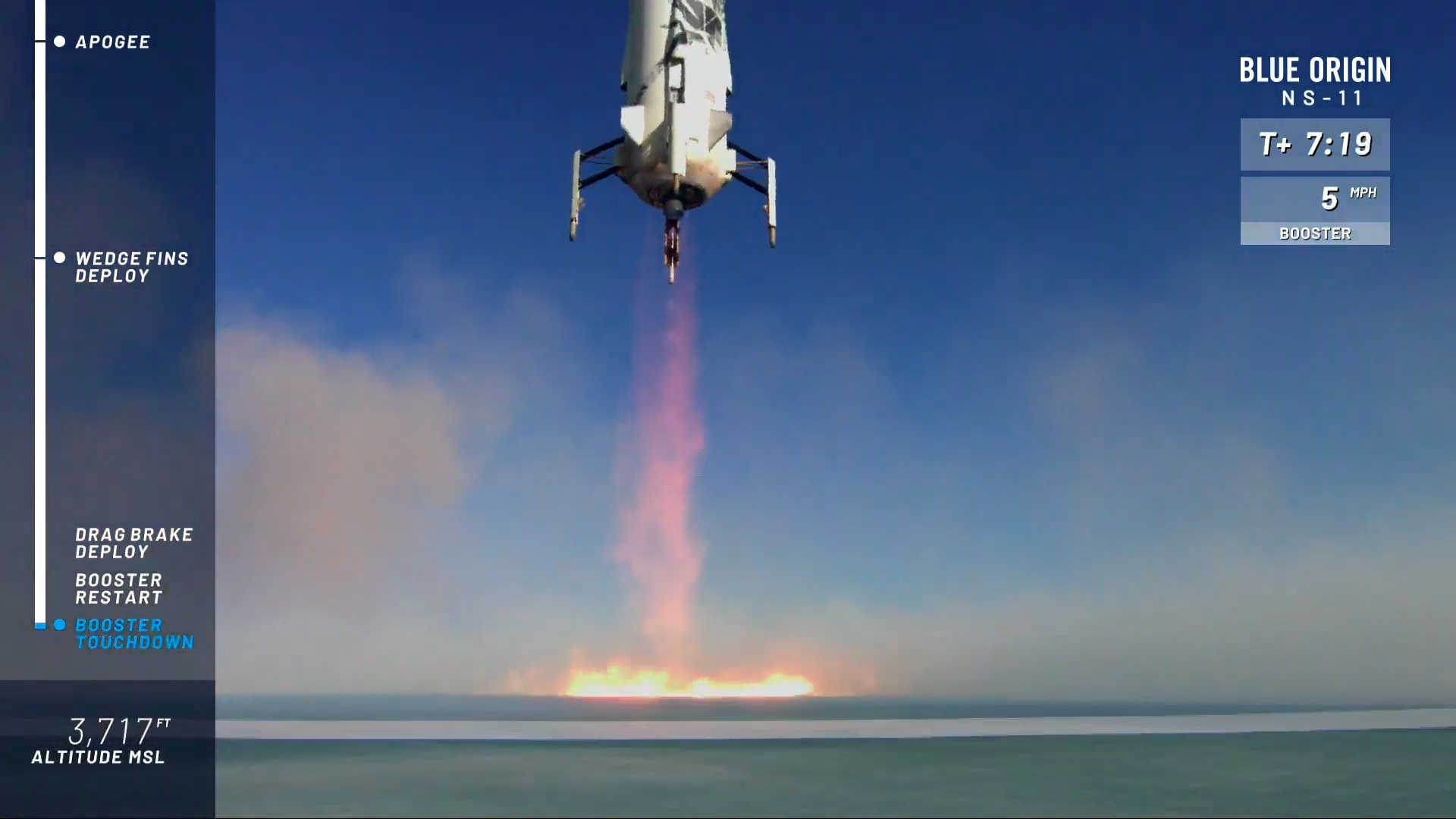
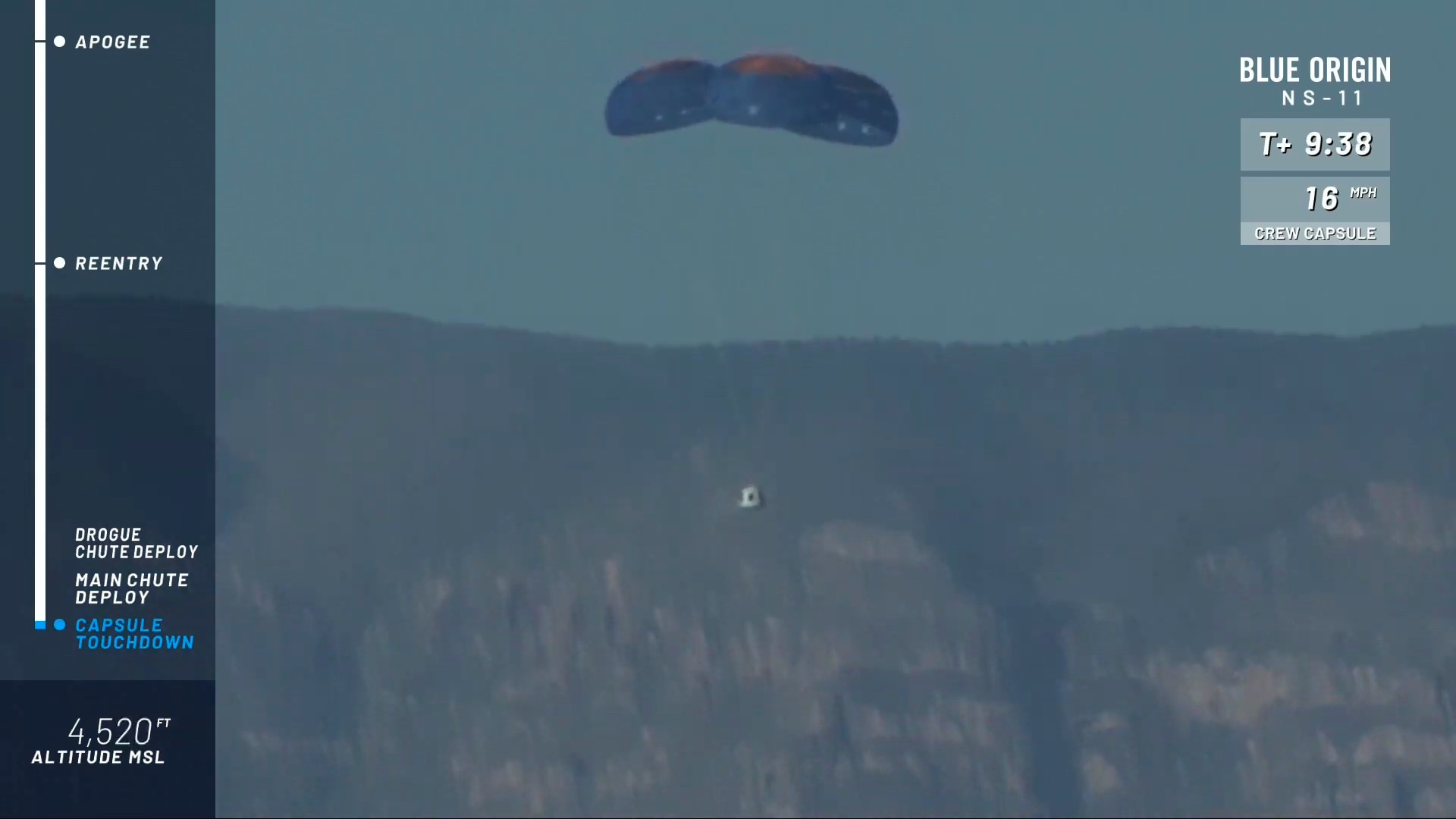
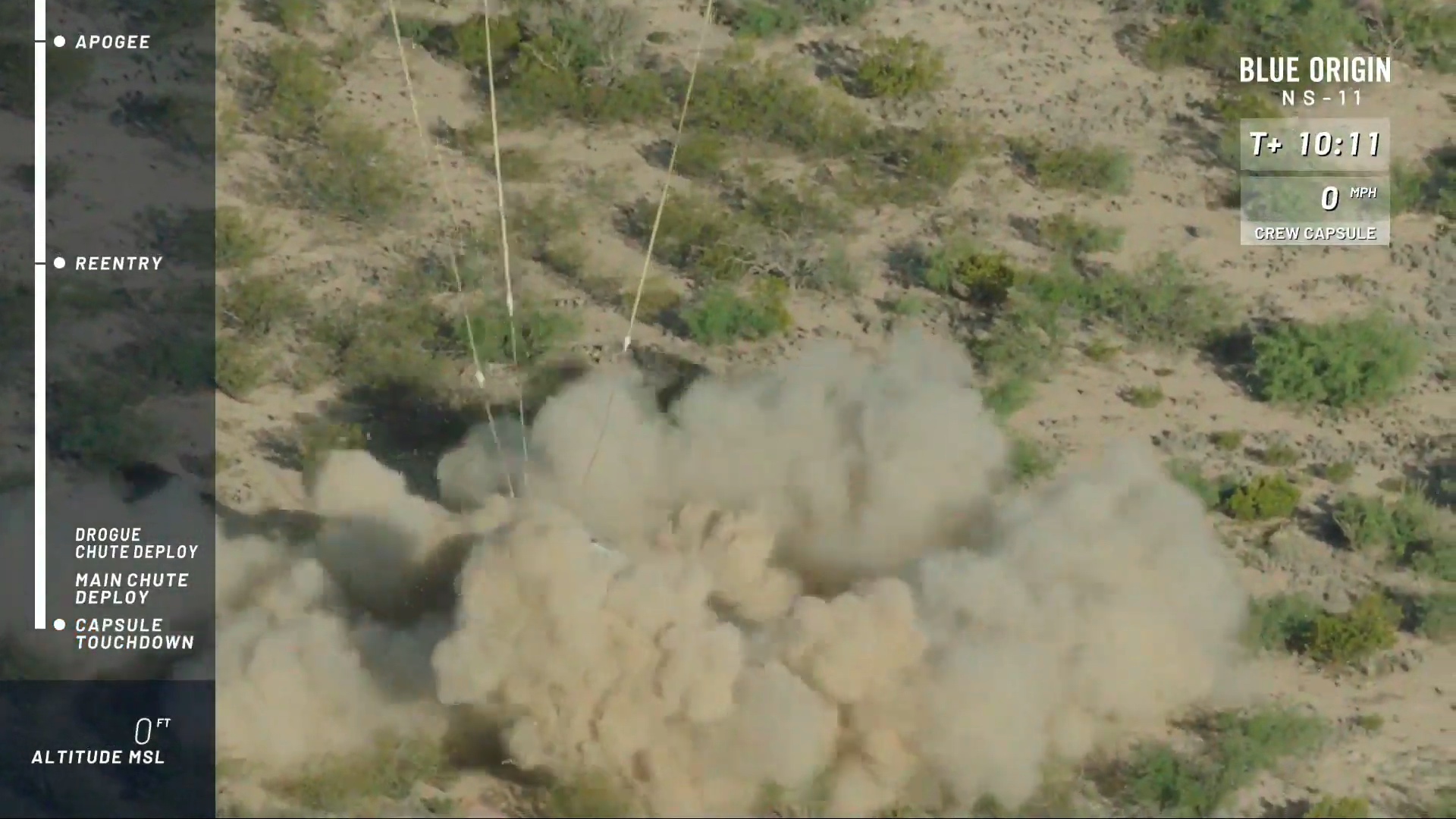
Today's test mission was the fifth for this particular New Shepard, which last launched in January. The spacecraft carried 10 science payloads on that previous flight, and it was even more heavily laden with research gear today: A total of 38 experiments went up and down with New Shepard this morning, Blue Origin representatives said.
Nine of these 38 experiments were supported by NASA. The NASA-sponsored payloads include a 3D-printing experiment led by the University of Kentucky, which could help advance off-Earth manufacturing technology; a centrifuge operated by the company NanoRacks that could allow researchers to gather biological data on suborbital missions; and a Purdue University experiment designed to improve measurements of the fuel remaining in deep-space spacecraft's tanks.
Get the Space.com Newsletter
Breaking space news, the latest updates on rocket launches, skywatching events and more!
Aiding research has always been part of New Shepard's job description, but the vehicle was designed primarily to carry paying customers. Every successful test flight brings this latter vision closer to reality — and the first crewed flight may be very close indeed. The six-seat New Shepard could begin flying people as early as this year, Blue Origin representatives have said.
It's unclear how deep-pocketed you'll need to be to fly aboard the vehicle; the company has not yet divulged ticket prices. To give you an idea of the likely ballpark: A seat aboard Virgin Galactic's SpaceShipTwo space plane, which has carried test pilots and Virgin's chief astronaut instructor to suborbital space on two crewed test missions so far, currently costs $250,000.
Blue Origin is run by the world's richest man, Amazon.com founder Jeff Bezos. New Shepard represents just one introductory piece of the company's long-term vision, which involves helping to get millions of people living and working in space.
Blue Origin is also developing a powerful orbital rocket called New Glenn and another booster called New Armstrong, about which the company has said little. Also in the works is a lunar lander known as Blue Moon. (The rockets are all named after pioneering NASA astronauts: Alan Shepard, the first American in space; John Glenn, the first American to orbit Earth; and Neil Armstrong, the first person to set foot on the moon.)
We should learn more about Blue Origin's plans for these various projects in a week. Next Thursday (May 9), Bezos will give a talk in Washington, D.C., that will provide a status update while sharing more about the company's vision, Blue Origin representatives said.
- How Blue Origin's Suborbital Rocket Ride Works (Infographic)
- Jeff Bezos Lays Out Blue Origin's Rocket Reusability Vision for Space Travel (Video)
- Home on the Moon: How to Build a Lunar Colony (Infographic)
Mike Wall's book about the search for alien life, "Out There" (Grand Central Publishing, 2018; illustrated by Karl Tate), is out now. Follow him on Twitter @michaeldwall. Follow us on Twitter @Spacedotcom or Facebook.
Join our Space Forums to keep talking space on the latest missions, night sky and more! And if you have a news tip, correction or comment, let us know at: community@space.com.

Michael Wall is a Senior Space Writer with Space.com and joined the team in 2010. He primarily covers exoplanets, spaceflight and military space, but has been known to dabble in the space art beat. His book about the search for alien life, "Out There," was published on Nov. 13, 2018. Before becoming a science writer, Michael worked as a herpetologist and wildlife biologist. He has a Ph.D. in evolutionary biology from the University of Sydney, Australia, a bachelor's degree from the University of Arizona, and a graduate certificate in science writing from the University of California, Santa Cruz. To find out what his latest project is, you can follow Michael on Twitter.









